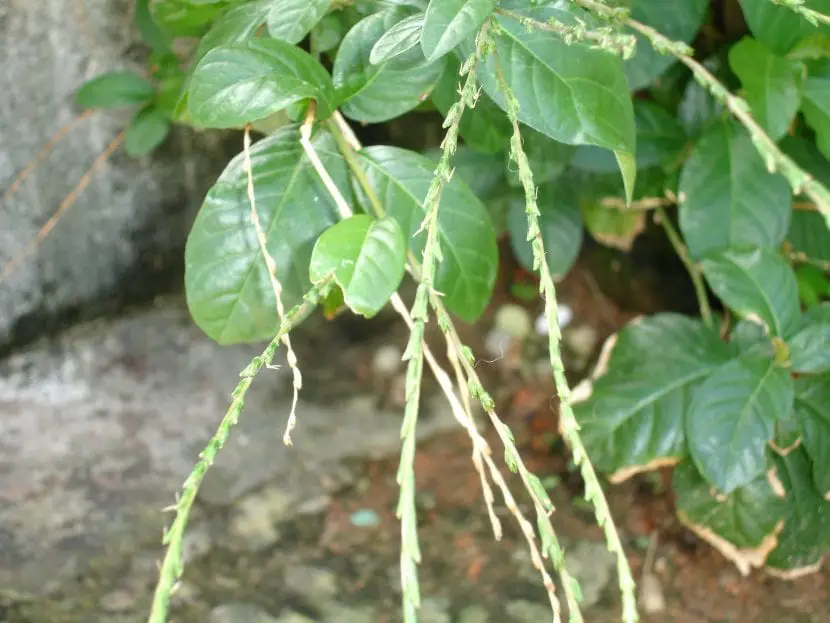
There are plants that produce flowers, but they are very small and have hardly any ornamental value, but there are others that, in addition to that, have very interesting medicinal properties. Such is the case of old mana shrub of tropical origin that grows equally well in forests as in open fields.
Despite being very sensitive to cold, it is a plant that is worth taking into account, especially in cases of headaches or mild respiratory diseases (such as colds). Find out more about her.
Origin and characteristics
It is an evergreen shrub native to the tropical regions of all America, whose scientific name is Petiveria allyacea. It reaches a height of between 30cm and 2 meters, with highly branched stems. The leaves are elliptical to oblong or obovate, with a size of 20 by 7 cm, and with pointed or pointed apex.
The flowers are grouped in peduncular inflorescences, up to 40cm long, and are white, green or pink, with a linear-lanceolate to linear-oblong shape, 3,5 to 6mm. The fruit is a striated achene.
Uses
Apart from being used as an ornamental, it is also medicinal, using the leaves:
- Cooked– Used to treat diarrhea, dysentery, gas, asthma, cold, bronchitis, whooping cough, epilepsy, hysteria, rabies, headache and toothache, cavities, rheumatism, diabetes.
- Poultices– Used to treat tumors, boils, ringworm, or ulcers.
- Tincture: in friction to relieve rheumatic pain.
Additionally, the cooked root given orally is used to treat asthma, cystitis, dysmenorrhea, fever, and venereal diseases.
However it is important that you know that it can induce abortion. So before starting any treatment with this or other medicinal plants it is necessary to consult a doctor.
What are their cares?

Image – Wikimedia / Dinesh Valke from Thane, India
If you want to have a copy of anamu, we recommend you take care of it as follows:
- Location: it must be outside, in semi-shade or in full sun.
- Earth:
- Pot: mix 60% mulch, 30% perlite with 10% black peat.
- Garden: grows in all types of soils, as long as they have good drainage.
- Irrigation: 4-5 times a week in the warmest and driest season, and 2-3 times the rest of the year.
- Subscriber: in spring and summer with Organic fertilizers.
- Multiplication: by seeds in spring.
- Rusticity: it does not resist frost.
What did you think of the anamu plant? Did you know her?

